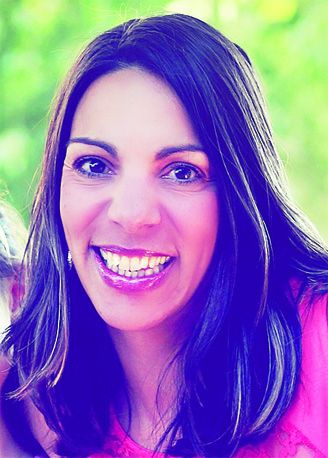The Power Women of the Wire Harness Industry

This edition of The Power Women series features Veronica Pirie, a Product Engineer – Electrified Power in the New Power business at Cummins Inc. Like some of the women highlighted in the series, Veronica is involved in supporting females within the engineering ranks.
Born in San Diego, Veronica spent many weekends outside with her family, including her Grandfather, a science teacher, and Campfire Kid group, a youth development organization aimed at helping kids and teens thrive at life skills. Although too young to realize she was leaning about science, she believes these experiences sparked curiosity in the field at a young age.
In her 7th grade year, her family moved to Florida because the company where her father worked as a mechanical engineer transferred him to a different facility. Her mother, stay-at-home parent, always had a passion for art and yarn, owning an Etsy shop for some years to sell hand-died yarn. Thus, Veronica had creative, entrepreneurial, and technical roots. Although she was in advanced classes in San Diego and Florida, she was most focused on band while in middle school and high school. In fact, Veronica had not determined a career upon applying for colleges. Enjoying the TV crime dramas, she had initially considered a career in criminology. While she also considered engineering as a potential career during her senior year, she wasn’t sure of her path.
After entering college at the University of Florida, she decided to pursue engineering without knowing which area of engineering would best fit her. Initially Industrial Engineering was of interest because of the versatility of the degree. However, after hearing from a friend in the Electrical Engineering department that they had the most hands-on labs compared to other engineering departments, she decided to designate EE as her major.
While at The University of Florida, Veronica was heavily involved in Women in Electrical and Computer Engineering (WECE), a student-run organization that fosters community among females and gender minorities in the discipline. Veronica joined the group during her 3rd year of engineering school upon declaring her major as EE. She held positions focused on outreach for the community and engineering peers, including President during her 5th and final school year. While involved in the organization, she and her counterparts were active in recruiting new members as they identified females in their classes, which were 6-8% female as she recollects. The group advocated for a makerspace study lounge within the engineering building similar to the lounge devoted by the department for IEEE (Institute for Electrical and Electronics Engineers). Her team was also successful in attaining both departmental and corporate funding to populate the room with 3D printers, Arduinos, and TI boards among other tools. While in the lounge, the females developed a camaraderie and studied together. They supported one another throughout their time in the engineering program.
Veronica’s first internship at Cummins was as a control engineer in the high horsepower engine area (19L+). Many of her counterparts selected internships at more traditional EE companies like software firms and chip companies. After comparing notes with them, she realized the diverse opportunities that would be available as an EE at a traditionally mechanical company. Having no prior experience with engines or wiring harnesses, her temporary assignment provided the background needed to return full-time upon graduation. After a couple of years in high horsepower, she found an opportunity in the Electrified Power business, where she is currently working as a product engineer. While she enjoyed her first role working with diesel engines, her current assignment is better tailored to her interests in working with innovating future technologies.
In addition to the work content, Veronica enjoys the inclusive atmosphere at Cummins. When starting with the high horsepower wiring harness group, she worked on a team of majority female engineers. Two years later in a different department of Cummins, females still comprise most of the engineers on her team. This ratio is atypical as most technical, engineering-focused industrial groups have traditionally been heavily weighted towards males. She feels that she is respected by the male counterparts in her workplace. However, she does note that she did have to adapt to the water-cooler conversations based on often-different interests between the males and females. She found it challenging to contribute to conversations on the hobby-cars or most recent Indianapolis Colt’s win. Over the last few years, she has learned to join these conversations by asking questions to learn about hobbies she doesn’t know about and finding common interests with those individuals she has not talked to as frequently.
Like her collegiate days, Veronica is still involved in organizations that conjoin females with engineering. Two years ago, she initiated a SWENext chapter in Columbus, Indiana. The organization has been challenged by covid protocols that limited gatherings, but they are regularly meeting online with other sections in Southern Indiana. Per the Society of Women Engineers (SWE) website, SWENext is “a way for girls to become a part of the SWE engineering community as a student through the age of 18.” (https://swe.org/k-12-outreach/youth-programs/).
In terms of challenges being a female engineer, Veronica did not have large obstacles to overcome. In looking back, she thinks the study lounge for the WECE group could have been allotted sooner as the campus group had been in existence for 10 years by the time she participated when finally granted the makerspace. On the positive side, Veronica thinks that engineering is a great field for women with the comparatively higher entry level salaries (versus average) in combination with the job demand. Her advice to any female considering engineering is to not focus on the discipline of engineering if unsure, but rather just get a degree. Once the engineering diploma is in hand, the individual is not limited to working only within that particular engineering field. In Veronica’s case, she preferred the new electrification technology to the diesel engine work assignment, so she simply changed groups. With a general need for engineers, the degree will equip an individual with many transferable skills, including problem solving, and make her an asset wherever her interests take her—whether a change of positions within a company or an external job change.
Thank you, Veronica, for taking the time to meet with me and for continuing to encourage females in engineering.































































